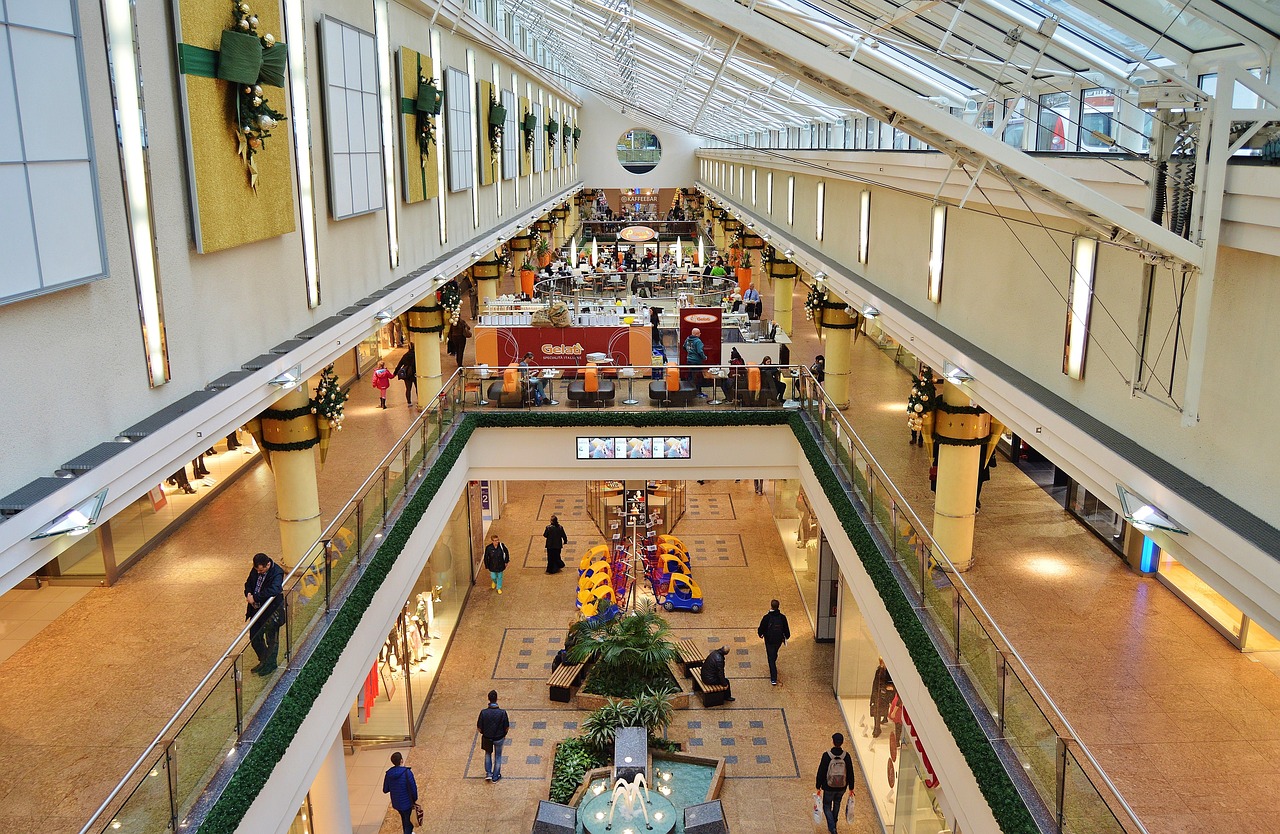How Brick-and-Mortar Shopping Can Survive in a Digital World
April 10, 2024 - 11 minutes readBuilding on what customers value while spreading some digital magic.

With over $5 trillion in E-commerce sales completed each year, online shopping is with us for the long haul. Many retail spaces now stand empty in major cities around the world as leading companies continue to close stores. Some might say the end of brick-and-mortar retail is at hand, but is that really the case? Despite the undeniable trends, many shoppers still enjoy the in-person experience, even as an occasional departure from their online shopping.
Brick-and-mortar retail cannot survive on nostalgia alone. To lure more customers into the mall and away from their laptops and phones, the in-person experience must adapt to changing customer preferences.
“I think the role of brick and mortar has been underestimated. Shopping isn’t simply transactional—it’s entertaining.” – Michelle Gass
What we (still) love about in-person shopping
Aside from getting off the couch and out among humanity, brick-and-mortar retail shopping comes with a few other perks many people continue to value. Common factors cited by consumers who prefer in-person shopping include:
- Experiencing the product: One reason E-commerce is accompanied by a high rate of customer returns is the remorse buying that results from limited in-person product interaction. Photos and descriptions can only go so far when customers want to touch, feel, use, or wear a product before they buy.
- Face-to-face interaction: Customer service is unsurpassed in the brick-and-mortar realm, where a personal touch and one-on-one attention successfully build trust and brand loyalty. Customers who build relationships with sales clerks and other staff members also return more often.
- Instant availability: Assuming the product you are shopping for is in stock, you can be confident you’ll leave the store with a shiny new toy when you shop in person. Despite the one day (or less) delivery service offered by many online retailers, this instant gratification is another big plus for in-person retail shopping.
7 keys to brick-and-mortar retail survival
The benefits of brick-and-mortar shopping are obvious, but retailers continue to look for new practices and technologies to improve the in-person experience. This continuous evolution is essential if brick-and-mortar is to remain viable in the face of online competition. The most successful survival strategies for in-person shopping include:
1. In-store events
There’s no reason special events and blow-out promotions should be reserved for Black Friday. Physical space gives retailers a competitive advantage they can use to invite celebrities and special guests, create interactive displays, or offer giveaways to lure shoppers into the store. Once inside, like-minded individuals might rediscover the social benefits of in-person shopping.
Inventory management software allows retailers to leverage information like overstock conditions, competitor pricing data, and seasonal trends to time in-person sales and special events for maximum impact. Successful events can produce a domino effect by offering a combination of entertainment and competitive pricing that produce more social media buzz for their establishment.

2. Personalized customer service
Customers continue to value the customer experience they get from an old-fashioned shopping trip, especially when it includes personalized service, expert advice, and hassle-free return processes. To differentiate from E-commerce options, in-person customer service personnel must be trained to recognize and address customer needs, rather than simply directing traffic and processing orders.
Customer relationship management (CRM) software brings the value of personalized customer service into the digital realm by collecting and analyzing data from each customer touchpoint, including contact information, quotes, orders, returns, and interactions that establish a complete customer profile. Brick-and-mortar customer service teams can use these tools to create customized offerings that further enhance the face-to-face shopping experience.
3. Utilizing feedback
Customer feedback is an important facet of the shopping experience that has successfully translated to the digital realm. Online reviews, complaints, and customer returns create a wealth of data that online retailers use to improve product quality, service, and delivery metrics. For in-person retail stores, feedback is obtained through:
- Customer conversations and interviews
- Feedback cards and receipt surveys
- Mystery shoppers
- Email surveys and social media feedback
Collecting feedback is not as important as analyzing it and putting it to practical use. While some digital feedback and surveys can be biased, brick-and-mortar establishments can obtain real-time, organic feedback simply by observing and conversing with their clientele.
4. Sustainable practices
Customers are more likely to spend their money in stores that align with their own social and environmental values and opinions. Value alignment can also lead to return visits and word of mouth advertising while building brand loyalty. Sustainability is an attribute valued by many consumers, and the packaging and transportation waste often associated with online shopping present an opportunity for brick-and-mortar retailers to forge a more sustainable identity.
Physical stores also give retailers an opportunity to demonstrate their sustainable values and culture to customers. These attributes can be communicated through product presentations in the store, the attitude and behavior of employees, store organization and cleanliness, and informative displays that highlight important company values.
5. Embracing digital technology
Retail experiments like check-out free stores that take brick-and-mortar shopping to the next level have met with limited success to date. What is missing from this form of high-tech makeover is a preservation of the human interaction and “fun” customers still want from in-person shopping. Applications of digital technology that embrace the personalized, human touch while improving efficiency include:
- Augmented reality to guide customers through the store using virtual assistants
- Beacon-based marketing to alert shoppers to discounts and specials through their phones
- Radio frequency (RF) ID tags to enhance inventory management and reduce losses
Behind the scenes, digital technology, including artificial intelligence (AI), can be used to analyze customer behavior and preferences in real-time so that pricing and inventory management adjustments are made proactively.
“You can design and create, and build the most wonderful place in the world. But it takes people to make the dream a reality.” – Walt Disney
6. Omni-channel commerce
Viewing online shopping as separate from, or in competition with, brick-and-mortar stores can be a mistake. Omni-channel commerce uses brick-and-mortar stores to enhance the online experience, and vice versa. For example, customers who typically shop online might be alerted to in-store specials through the company website or mobile app.
The term “showrooming” refers to seeing, touching, or testing a product in person before purchasing online, while “webrooming” customers use the internet to select a product before making a brick-and-mortar purchase. Both concepts rely on up to date and accurate inventory and price data across all channels to keep the overall experience consistent.
7. Inventory management software
Versatile inventory management software is the key to maintaining real-time stock information, accurate pricing, and efficient order fulfillment processes that take the stress out of in-person shopping for customers and retailers alike. Efficient and accurate receiving gets products onto shelves faster while customized reports and dashboards help business owners decide when to discount items and where to position them for maximum impact.
For store employees, reliable inventory data and mobile point of sale (POS) platforms expand their horizons by allowing them to carry the latest information in the palm of their hand and complete sales transactions from anywhere in the store. Effective inventory management also reduces errors and speeds up return processes, giving shoppers more time to search for their next bargain.
Brick-and-mortar retail survival: Final thoughts
It seems unlikely that brick-and-mortar retail will ever disappear entirely, but there are still challenges to overcome before in-person shopping can once again thrive, rather than survive. Influential factors include crime and security concerns, along with skyrocketing labor and real estate costs. Aligning in-person and online shopping practices can help retailers weather the coming storms as the shopping experience is redefined.
The cloud-based Agiliron product suite supports online and brick-and-mortar retail establishments with mobile-friendly, scalable solutions that integrate seamlessly with all leading E-commerce platforms. Inventory management and CRM modules harness the power of real-time data and analysis while our mobile point of sale software allows you to sell in more places but manage from one.
Brick-and-mortar retailers benefit from the same real-time data access and customer relationship management tools used by E-commerce proprietors, but finding the right balance can be challenging. Our solution experts are here to help. Contact us today to find out how the latest inventory management, POS, and CRM tools can move your business to the next plateau.
Tags: customer experience, retail